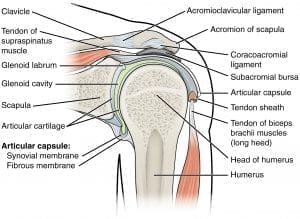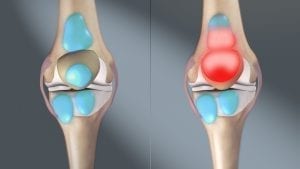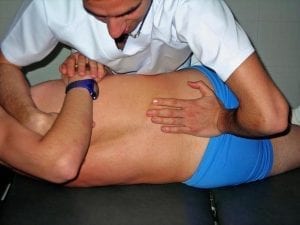Shoulder Physiotherapist
Physiotherapy for Shoulder Injury,
Fractures,impingement And Dislocations
Have you suffered a shoulder injury from sports or work related injury and are serious need of the best shoulder physiotherapist for a shoulder injury you can find in Sydney ? Suffering from shoulder pain at night or need physiotherapy for shoulder bursitis, impingement, dislocation, injury or fracture ? The right exercise and shoulder injury physio can help put an end to pain and discomfort. Here at New Age Physio, we are equipped with the latest and greatest technology for treating rotator cuff or shoulder injury in the fastest possible time to help get you back to work or playing sports as quickly as possible.
Our Sydney Shoulder physiotherapists are the best shoulder injury physio experts in the industry and one of the best physiotherapists in Sydney. Read more about our physio services. If you’ve injured your shoulder, you should not have to live with shoulder pain or worse, wait for it to heal on its own when realistically it needs treatment with the best shoulder physio in Sydney right here at New Age. Treatment for pain is carefully planned through exercises and other treatments to help restore shoulder movement. From lifting arm pain to suffering shoulder pain at night, you can put a stop to all the pain and discomfort by visiting our shoulder physiotherapists in Sydney.

Frequently Asked Questions
The shoulder is made of of three bones and can be very easily injured or damaged if loaded or used incorrectly. Shoulder pain can also be very painful as this is a sensitive area to injury as well, and can spread pain down the arm.
- The humerus (upper arm), scapula (shoulder blade) and clavicle (collar bone) are the three main components of the shoulder.
- With these three components are also what is known as the rotator cuff which help secure and stabalise the shoulder joint.
- There is also a lubricating sac which sits across the top of your shoulder called the acromion. This lubricating sac is called the bursa and assists in your shoulder tendons to move about freely while moving or rotating your shoulder. The bursa is found between the rotator cuff and scapula
Shoulder injury from sport or work related matters can seriously limit movement to your arm should you injure this area. It is a very unique musculoskeletal design as to the rest of your body which basically offers a much higer range of mobility than other joints in your body.
Shoulder impingement or a shoulder pinch often takes place when in many cases the b ursa or rotator cuff becomes pinched in the space between the humerous and the acromion. This often happens when you have your arm over shoulder height and tend to rotate your arm inwards. Even if you did this now, you would find that your shoulder may feel somewhat slightly loaded up or un-natural in this movement.
Possible outcomes fro such a shoulder injury as this is inflammation of the tendon and bursa which will restrict movement and cause shoulder pain.
- Pain at the front or the top of the shoulder.
- Pain can occasionally occur down the arm making use of the arm difficult.
- Pain with heavy lifting.
- Pain above shoulder height.
- Pain on the injured location of the shoulder.
- Shoulder Trauma
- Repeatedly over reaching on a constant basis
- Poor bio mechanics or body posture which can lead to improper use of the shoulder
- Thickened tendons or bony spurs causing reduced space for movement
Yes It Can. An experienced shoulder physiotherapist has the means to be able to asses the correct course of action and exercise to help restore an injured or pinched shoulder which will put an end to the pain you may suffer during the day or night. Shoulder impingement usually responds very well to shoulder physiotherapy treatment as opposed to not be treated and neglected altogether. When you have a carefully assessed action plan for shoulder exercise and physiotherapy, you will recover in your ability to use your shoulder movement.
The right exercises and techniques to correct your posture don’t have to hurt but this also depends on the severity. Certain therapies include massages that will provide you a relaxing moment, others can be a little painful in the beginning but this reduces with each treatment as posture over time is corrected. It is more painful to continue with poor habits like slouching when sitting or leaning on 1 leg than correcting your posture.
Yes, it can make you look taller. Posture correction therapy won’t make your bones or muscles grow but it does make you look taller. A poor posture makes you look insecure and certain habits like slouching will make you appear shorter than what you really are. Posture correction will allow you to look stronger, taller, and more secure.
Although we may be located in Austral NSW, we really are the best posture correction therapy clinic in Sydney. It will be worth the drive to come visit, and talk to one of our highly trained physiotherapists about how we can help alleviate and get rid of pain from bad posture. Whether we use a posture brace as part of your treatment or just structure a treatment with an evidence based examination, you can bet your bottom dollar you will see the back of bad posture with the right posture correction therapy treatment. Visit our physiotherapy clinic today, or call us on 9606 8258 for your posture correction treatment
Tears Of The Rotator Cuff
When it comes to the rotator cuff, there are only four muscles that form together with the rotator cuff. It is typical for tears to take place along the rotator tendons or muscles which are usually cause by trauma which can results from falls or physical injury from work related matters such as lifting, pushing or pulling or, repetitive strain injury from repeated use of the tendons or muscles.
Symptoms Of Rotator Cuff Tears
- Pain in the top of the shoulder
- Pain in the front of the shoulder
- Pain occasionally spreading down the arm
- Restricted motion resulting in severe cpain
- Difficulty with reaching forward
- Difficulty with reaching to the sides
- Overall, severely reduced use and mobility and arm
Most minor rotator cuff tears can be treated by an experienced shoulder physiotherapist. Major injury resulting from falls or major tears can sometimes require surgery.
Call Today And Speak To Our Physio On Ph: 9606 8258
What Is Referred Pain?
This is pain that can often arise from your back or neck area. In most cases pain usually results around the rear of your shoulder or top areas of your arms. This referred pain can also reach down your arms into your forearm and sometimes even your wrists or hands. Usual symptoms from this can also be numbness or sometimes pins and needles. A highly qualified shoulder physiotherapist has the knowledge and skill set to formulate a carefully structured plan to help eliminate shoulder pain and discomfort from trauma or repeated strain injury.
If you are suffering shoulder pain at night, the right treatment can make all the difference in restoring shoulder movement and ridding paint and the right shoulder physiotherapist can help make all this happen
Physiotherapy For Shoulder Bursitis
Why Does Shoulder Bursitis Hurt So Much ?
Why Does Bursitis Hurt At Night ?
How Long Does It Take For Shoulder Bursitis To Heal ?
Can Physiotherapy For Shoulder Bursitis Help ?
What Is A Shoulder Dislocation ?
In your shoulder, you have what’s called a glenohumeral joint, which is the glenoid (arm bone) which articulates/joints to your socket, that is responsible for moving the shoulder.
These two articulating bones are connected buy ligaments, which stabilize the joint. A shoulder dislocation occurs when the ligaments rupture/overstretch, causing an abnormality of the shoulder joint. Physiotherapy for shoulder dislocation with the right treatment plan can help restore shoulder movement and relieve injury and pain
Call Today And Speak To Our Physio On Ph: 9606 8258



How Does Shoulder Dislocation Occur ?
There are 2 main causes of shoulder dislocations: direct and indirect causes
1 : Direct causes: occur from an external load such as a football player tackling you and causing the articulation to be disrupted.
2 : Indirect causes: Occur when you have weak stabilizing rotator cuff muscles. These muscles are the biggest stabilizer for the glenohumeral joint, and if they don’t work during big dynamic shoulder movements such as a softball pitch or bench press, then they can cause instability in the shoulder and therefore lead to a dislocation.
Can Shoulder Dislocation Pain Be Permanent ?
With any acute shoulder injury, there is an increased risk of recurrence compared to someone who doesn’t have an injury.
Shoulder dislocations aren’t permanent, but they need to be managed if you want to go back to previous functioning. For example following the correct exercise management plan with your physiotherapist to strength the stabilizing muscles on a regular basis, otherwise you can get the injury
How Can Physiotherapy For Shoulder Dislocation Help ?
We also work with strengthening your deep stabilizing shoulder muscles like your rotator cuff to ensure optiomal stability. Shoulder dislocations need continual management and exercises to avoid the chance of recurrences.
